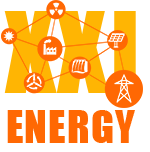Докладчик
Тезисы доклада
The paper analyzes and discusses the methodological and practical aspects of the energy efficiency trend in Azerbaijan, based on the methodology presented by the World Economic Forum. (WEF).
The basis of the methodology for assessing the efficiency of energy sector is the use of the energy triangle, where the top are economic growth and development, environmental sustainability, and energy access and security, where a set of indicators with their weight are used to evaluate each subsystem. The number of indicators, of course, and weight coefficients are adjusted over time in order to most fully take into account all the features of the energy sector. Appropriate dependencies of changes of the conditions of the energy triangle subsystems for seven regions of the world were built up through 2013-2017. The most characteristic features of the energy functioning in the selected regions are identified: in the relatively developed countries (regions), the Energy access and security subsystem and the relatively low values of the economic growth and development subsystem are high, with the environmental sustainability subsystem, as well as the resulting importance of energy efficiency in the countries of these regions, taking a relatively middle position. This is the case in the European Union (EU), North America (North America), South Africa (BRICS), the Association of Southeast Asian Nations (ASEAN) and the CIS (CİS).
In the less developed countries (Sub-Saharan Africa), the relative importance of the "Environmental sustainability" subsystem and the low values of the "Energy access and security" subsystem are characteristic of energy efficiency. In the Middle East and North Africa (MENA), however, energy access and security are high and environmental sustainability is low.
Similar studies were carried out to determine the efficiency of the energy sector of Azerbaijan. During the period 2013-2017, the efficiency of Azerbaijan’s energy sector according to the WEF overall showed an increase of 14%, with the subsystem "Economic growth and development" growing by 38%, the subsystem "Environmental sustainability" by 12% and "Energy access and security" by 1% .It should be noted that according to the same calculations, the numerical values of the efficiency of the Azerbaijan’senergy sector as a whole for 2017 are 0.67 and subsystems respectively 0.65; 0.57 and 0.79.
During the period under review, the efficiency of Azerbaijan’s energy sector has significantly increased in the ranking of the countries. In 2013, Azerbaijan ranked 42nd out of 105 countries; in 2017, it ranked 42nd out of 105 countries. 36th place among 127 countries of the world.
The analysis found that the studies of the WEF were incomplete, as some indicators for estimating the values of individual subsystems were not available, which resulted in inaccuracy of assessment of both individual subsystems and the resulting value of the energy efficiency of Azerbaijan.
Azerbaijan’s energy efficiency values were recalculated in the period under review, taking into account all available indicators included in the system of indicators for the evaluation of individual subsystems, which resulted in Azerbaijan’s place in the rating of the countries of the world being moved by several positions higher.
This work was supported by the Science Development Foundation under the President of the Republic of Azerbaijan - Grant № EİF-BGM-4-RFTF-1/2017-21/09/1.
Literature
- The Global Energy Architecture Performance Index Report 2013
- The Global Energy Architecture Performance Index Report 2014
- The Global Energy Architecture Performance Index Report 2015
- The Global Energy Architecture Performance Index Report 2016
- The Global Energy Architecture Performance Index Report 2017
- IEA. World Energy Investment 2016 - Fact sheet. [Online] https://www.iea.org/media/publications/wei/ WEI2016FactSheet.pdf.
- International Energy Agency. World Energy Statistics and Balances online data service 2016 edition. [Online] July 2016. http://www.iea.org/statistics/relateddatabases/ worldenergystatisticsandbalances
- BP. Energy access database. World Energy Outlook. [Online] 2015. http://www.worldenergyoutlook.org/resources/ energydevelopment/energyaccessdatabase/
- 350.org. Global CO2 concentrations just passed 400 parts per million. [Online] March 2016. http://400.350.org/
- Nasibov V. Kh. "Sustainability And Efficiency of Azerbaijan Energy Performance and the Potentials of their Improvement", 18th IFAC Conference on Technology, Culture and International Stability, TECIS 2018 13-15th September 2018 Baku, Azerbaijan, Volume 51, Issue 30, pp. 575-579
- Yusifbayli N.A., Nasibov V. Kh. "Energy sustainability index of Azerbaijan and the potentials of its improvement", Electroenergetics,electrotechnics, electromechanics + control, Bakı 2013, Volume 4, №4, p. 13-23
-
- The World Bank. Energy imports, net (% of energy use). [Online] http://data.worldbank.org/indicator/EG.IMP.CONS. ZS.
- Europa. Energy Strategy. [Online] 2016. https://ec. europa.eu/energy/en/topics/energy-strategy.
- IEA. World Energy Outlook, 2019.

